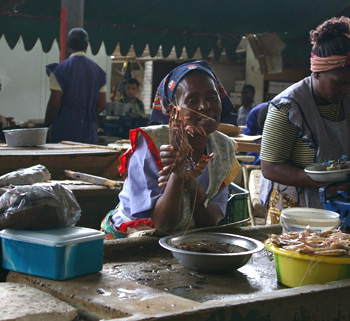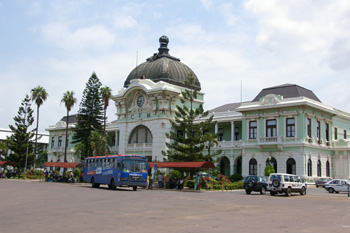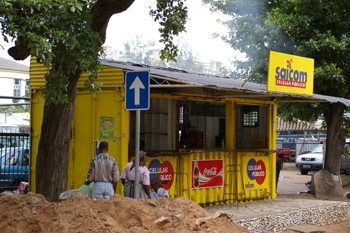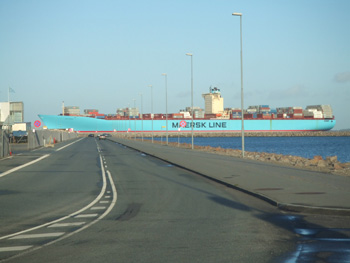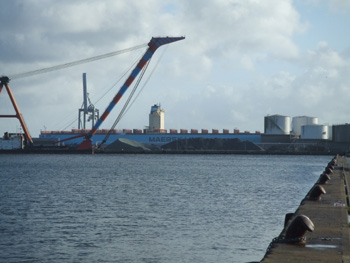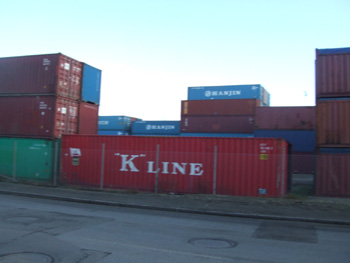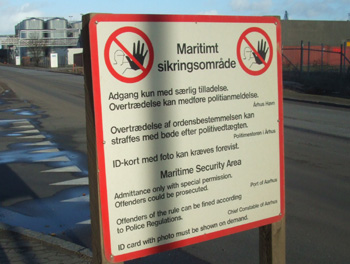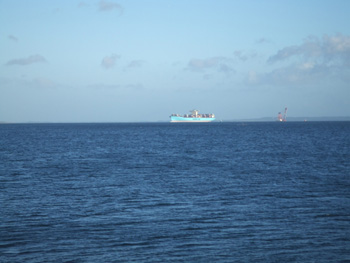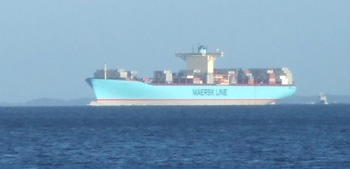We are developing the social individualist meta-context for the future. From the very serious to the extremely frivolous... lets see what is on the mind of the Samizdata people.
Samizdata, derived from Samizdat /n. - a system of clandestine publication of banned literature in the USSR [Russ.,= self-publishing house]
|
As advertised, the seafood is excellent.
The colonial archiecture (and for that matter the relaxed friendliness of the people) is Portuguese. A beer costs about 25p,
and Brian is right.
(Actually, there is a book to be written on why mobile phones and their applications in Africa have evolved differently than mobile phones in the rest of the world, and the biggest things (besides their being so useful) is the lack of legacy. That means legacy in terms of business methods as much as legacy in terms of technology. In Europe and (paritcularly) America, mobile phones networks are run by the same old telecommunications businesses as were traditional phones, and these companies are both terribly bad at retail and figruring out what customers want rather than just telling them what they should want. Plus they are far too busy trying to protect their existing business (including their existing mobille phone businesses) to want to innovate, and sometimes they will actively oppose innovation. Africa is much more a matter of “Try and see what works”, and that really works. But I digress).
I was in Johannesburg for a few days before coming here, and while the northern suburbs of that city have all modern amenities and in many ways feel like modern American suburbia around a couple of Edge Cities, every building and business in that city is fortified in a way that is not normal elsehwere. It is a dangerous city, and that influences the way that people go about every moment of their lives.
Maputo is not like that. Walking down the street there is no air of threat whatsoever. I feel perfectly safe walking down the street with my digital SLR around my neck and using my iPod, which I certainly would not in Johannesburg. Occasionally people try to sell you things fairly aggressively, but they are simply trying to sell you things.There is no implied threat whatsoever. By the standards of the thirld world this is a very relaxed place. So far I am enjoying it very much.
A great secret has been revealed. Personally I think it explains a lot. Brian Micklethwait is really Gully Foyle.
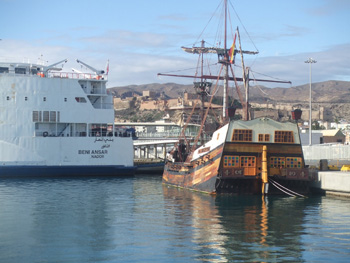
Almeria, Spain. January 2007 (Click on the image to better see the Moorish castle).
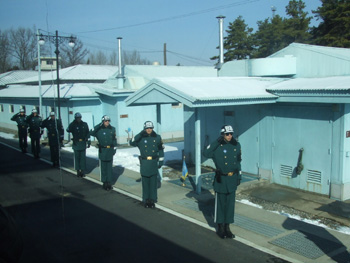 As I have recounted, on my way home to see family in Australia in December I stopped in South Korea for a few days. The trip was principally a city break: I had a look around Seoul. Seoul was in many ways very impressive, but it was also a city striking in its normality. It is a modern, technologically advanced city. The subway system works extremely well. There are McDonald’s and Starbucks outlets everywhere (this is a rare market where a local McDonald’s clone has apparently outdone the original. On the other hand, all Korea’s coffee shops belong to Starbucks). Buildings are modern. People love their mobile phones. Certain Korean brands are perhaps more prominent than they would be in a more balanced economy and they seem to realise this though. Samsung and LG, for instance, seem to market many of their products under local brand names, leading to iconic and very familiar Korean products being present in Korea only under unfamiliar brand names. The city feels extremely safe, it is very clean, and it is about as low stress a place to visit as can be imagined.
The only hint that complete insanity begins less than 50km to the north is only a small one: the fact that uniformed soldiers are to be seen regularly on the streets. There is nothing threatening or remarkable about this. These are just ordinary 19 year old guys in the middle of their compulsory military service. You see them catching the subway, or having lunch in fast food restaurants. These are just young guys going about their lives, who happen to be wearing fatigues. There are many other cities where you will see the same thing. However, now that most developed countries have abandoned compulsory military service, these cities are fewer than they used to be, particularly in countries as advanced as South Korea.
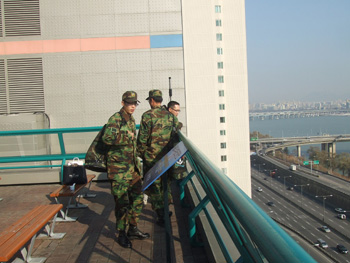 But Korea has retained compulsory military service, and this is because the most heavily defended border in the world lies less than 50km north of Seoul. Of course, I had to go to see it. One can only go into the Demilitarized Zone by going on an organised tour. These are run by both the local USO and by local Korean tour companies. The guidebook recommended the USO tour as “the best tour” but the days on which it ran were not convenient with my schedule, so I booked myself on one of the locally run tours. This turned out to be just fine. However, perhaps because most English speakers go on the USO tour, English speakers were in a minority on this tour. Most of the people on the bus were Japanese. Only six of us were English speakers (myself, three Singaporeans, and an American engineer based in Seoul who was on the tour with his adult daughter who was visiting him for Christmas). There was also a Korean couple. This is apparently rare. Korean civilians are not normally allowed in the DMZ, and those that wish to go on the tour have to apply six months in advance, in which time a thorough background check is undertaken on them, apparently to make sure they are not the sorts of people who are likely to wish to defect to North Korea or otherwise allow the enemy to gain propaganda points (this seems like a deeply peculiar thing to do, but apparently once in a while someone is nutty enough to want to try it). In any event, their presence on the tour was apparently quite unusual, as the English speaking guide remarked upon their presence. And of course, there was no ‘Korean speaking guide’ (although the guides were both Korean and thus clearly spoke the language). The tour was conducted in Japanese and English, and the English and Japanese speaking guides took turns to speak.
When you drive north from Seoul, you realise what a huge metropolitan area the city is at the centre of. (It depends how you measure it, but there is a case for Seoul as the second largest city in the world, which is doubly impressive given that the population was reduced to a few hundred thousand during the Korean War). Urban areas and manufacturing centres are beside the road almost all the way to the border (the LG/Phillips LCD display factory is no more than 10km from the DMZ, so our flat screen television supply is one of the first things we shall lose upon the start of World War 3).
As we drove north the guides gave us various useful pieces of information, such as that we should not run off into the bushes “as there are many minefields”, and that it was very important that we not taunt or gesture at any North Koreans, as if we did they would take our photographs and use them for propaganda purposes against the free world (also, our tour would likely be terminated immediately).
Then we crossed the river Imjin,and normality ceased. → Continue reading: A trip to the DMZ
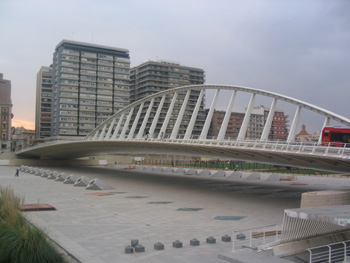
Valencia, Spain. January 2006
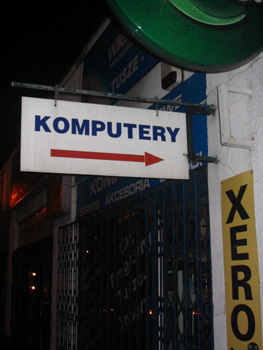
Warsaw, Poland. February 2006
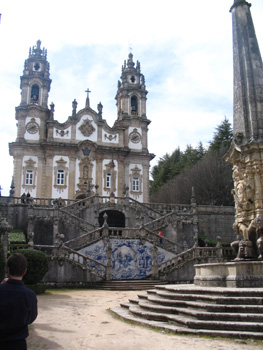
Lamego, Portugal. March 2006
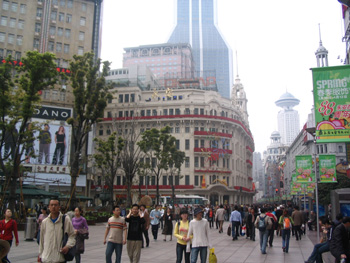
Shanghai, China. March 2006
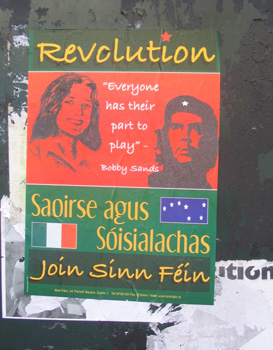
Belfast, Northern Ireland. April 2006
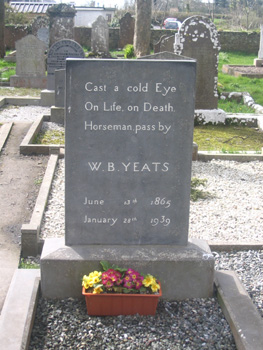
Sligo, Ireland. April 2006
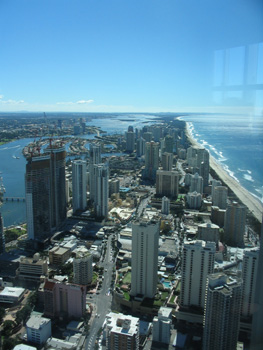
Gold Coast, Australia. May 2006

Singapore, May 2006
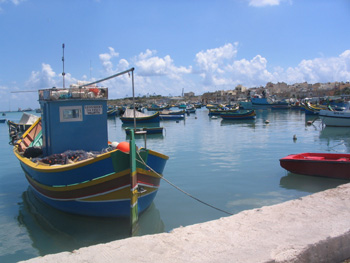
Marsaxlokk, Malta. June 2006
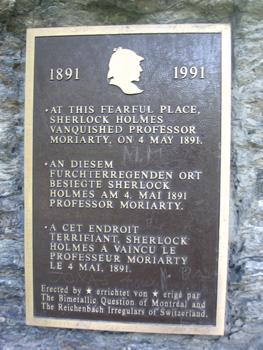
Meringen, Switzerland. June 2006
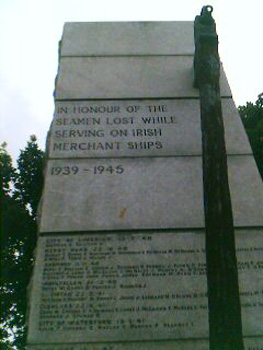
Dublin, Ireland. July 2006
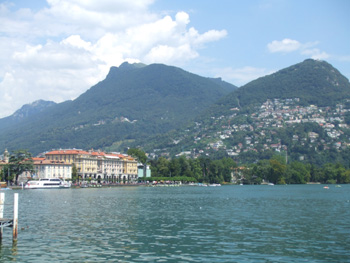
Lugano, Switzerland. August 2006
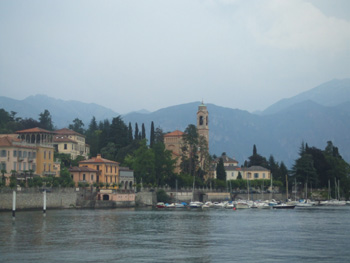
Lake Como, Italy. August 2006
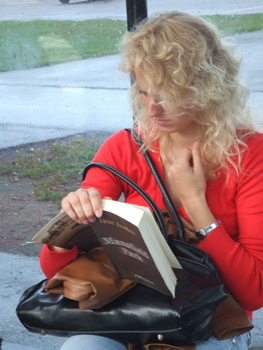
Tallinn, Estonia. August 2006
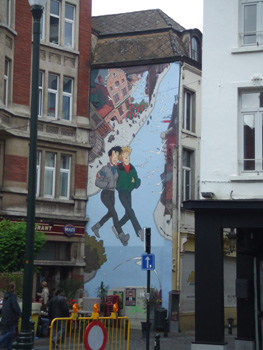
Brussels, Belgium. September 2006
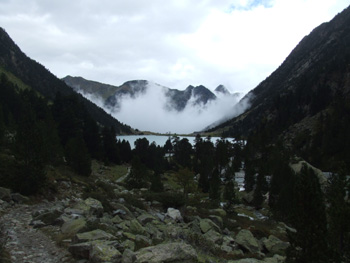
Cauterets, France. September 2006
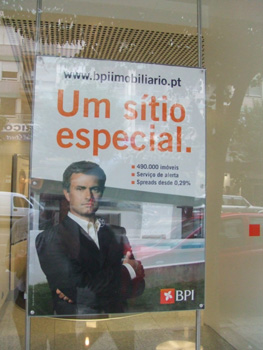
Porto, Portugal. October 2006
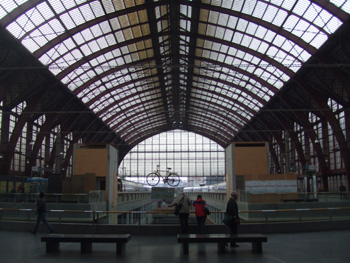
Antwerp, Belgium. November 2006
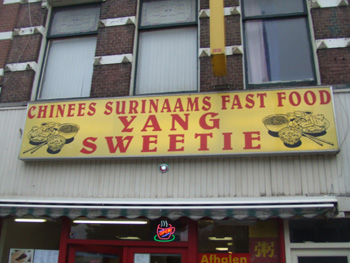
Rotterdam, Netherlands. November 2006
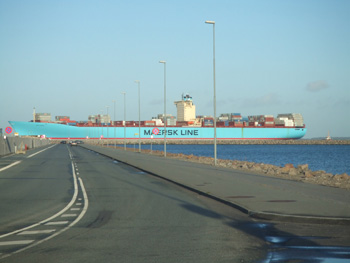
Aarhus, Denmark. November 2006
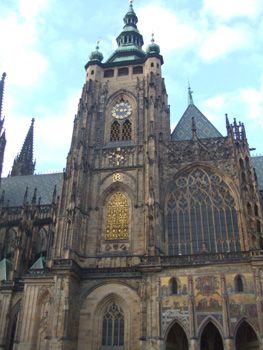
Prague, Czech Republic. November 2006
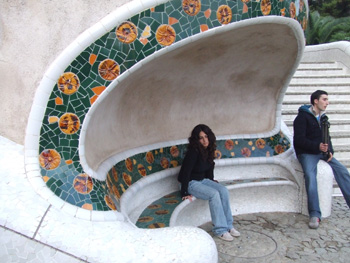
Barcelona, Spain. December 2006
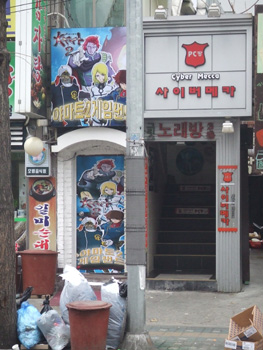
Seoul, South Korea. December 2006
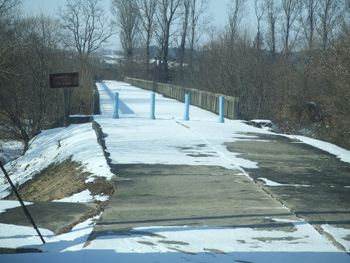
Panmunjom, Demilitarized Zone. December 2006
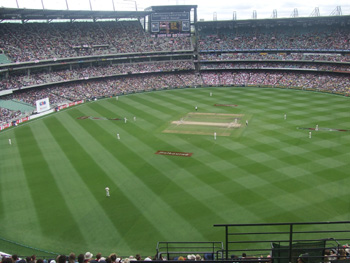
Melbourne, Australia. December 2006
My co-Samizdatista Brian Micklethwait has some comments on the fact that British retailers had a bad Christmas, and that people did not really get spending until the last few days, when shops had pre-Christmas sales and dropped their prices heavily. I think the real story is actually this one. Britain’s high street stores have horrible cost structures, which they have been able to get away with because they have traditionally faced relatively little competition. For this, as for almost everything, I blame planning laws. Large shopping malls – particularly large out of town shopping malls – barely exist in Britain, as their growth has been hindered by government on supposed aesthetic grounds, and to “prevent the ruin of our high streets”. Of course, the people who pay for this are consumers through high prices. Retailers charge high prices and pay high rents. Landlords pay high mortgages rates, and economic value is generally destroyed.
In the past few years, parallel retail channels (not just the internet, but that is the biggest one) have sprung up without the high cost structures and with much lower prices. Most people would actually prefer to shop in a store at Christmas time, as this makes it much easier to take goods back later and/or get customer service, but they will not do so if goods are dramatically more expensive. So, they hold off buying, playing a game of chicken, and eventually prices drop a couple of days before Christmas (however the internet retail sector has boomed right through the Christmas season). Economic theory is pretty clear that in a perfectly competitive market, retail prices approach marginal costs. In vaguer terms, the more competitive a market, the more prices relate to costs. The British retail market is certainly not a perfectly competitive market, but it is closer to one than it was a decade ago.
Inevitably, with collapsing margins come situations where shops can no longer afford to pay their rent. One would expect this to lead to either a fall in rental yields and ultimately retail real estate values, or a change in use of a lot of retail space from retail to residential or to offices, given that London’s residential real estate market is booming. A further possibility is of course an improvement in customer service, as bricks and mortar retailers attempt to provide additional value for higher prices. However, another possibility is that it leads to even stronger planning laws aimed at preventing this and further trying to “save our high streets”.
Interestingly enough, the stores that are suffering the most are probably not the quirky independent stores that the Evening Standard loves to champion as much as the less well run high street chains: shops that sell boring, goods that can be easily sold in bigger shops or over the internet. People like Dixons and Woolworths. Well run businesses, most notably Tesco, do fine of course.
Actually, come to think of it, the Dixons name has vanished from the High Street, as the stores have all been rebranded Currys, except for the airport stores, which are still Dixons. The answer to why this is is quite an interesting one. DSG International (aka Dixons Group) hit an interesting problem, which other retailers have also encountered when setting up internet businesses. One would think that an electrical retailer with high street stores would have certain advantages setting up an internet retailer. Because people have heard of them they are more likely to trust that they will still exist tomorrow. They can use the bricks and mortar stores to handle returns and after sales service.
The trouble with this in the electronics business in Britain is that internet retail prices are dramatically lower than high street prices. Customers who see a price on the internet from a brand retailer expect to be able to get the same price in a store of that same retailer. If they cannot do so, they feel cheated. Therefore Dixons was between a rock and a hard place. Either they made their internet prices so uncompetitive that they would not sell anything online, or they annoyed the customers of their bricks and mortar stores by refusing to offer them the same prices they offered online. The solution was to use the Currys brand (which they had long used for their out of town retail park stores) for their high street stores as well, and to use the Dixons brand merely for online retail. And for airport stores, as nobody expects prices in airport stores to be the same as elsewhere. On the website, they leave subtle signs that they are the same customer to reassure online customers that they can be trusted, but hopefully not enough to make potential bricks and mortar customers think that they are being cheated by not getting the same prices.
As another example: consider these three websites. One. Two. Three. They are all the same company, which is a big presence in the British High street. The first website is branded the same as the high street retailer, and offers more or less the same prices it does. The second website is clearly but less obviously connected to it, and offers lower prices. The third is less obviously connected to it still, and offers lower prices still. It is really quite clever.
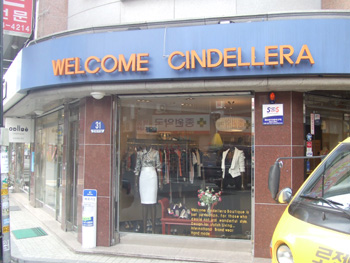
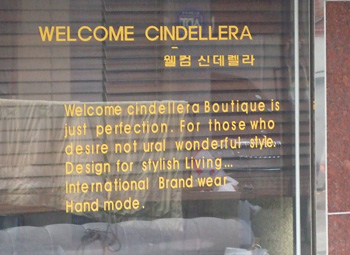
Personally I desire himalaya wonderful style. Which means it must be the place for me.
This is just too easy. I am in the Nonhyeon area of Seoul, which is a nice part of town with lots of interesting shops, and some reasonably decent architecture. And a variety of other interesting sights.
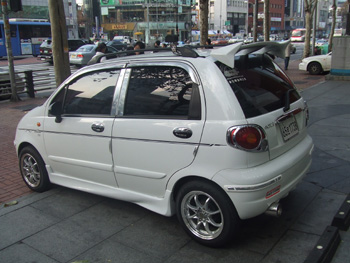
Yes, that is a Daewoo Matiz with spoilers. Really.
Update:
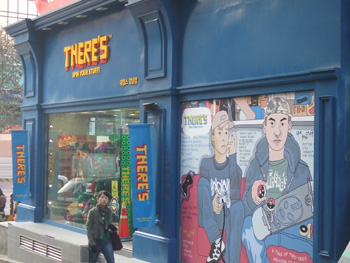
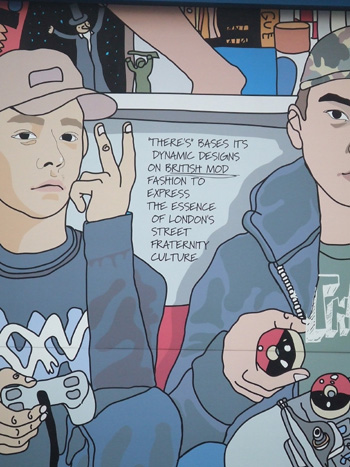
As a Londoner, all I can say is that their profound insight into and authentic reproduction of London’s street fraternity culture is uncanny. Particularly the bit with the skateboard.
It is presently 2.42 am in Seoul. I am suffering from jetlag (Making an eastern journey with a nine hour time difference is especially brutal). I went to bed at about 6pm yesterday evening, and I have therefore just woken up, and I have a few hours to while away, . Buying an international power adaptor in the largest electronics market in Asia did not turn out to be particularly difficult, so thankfully I do not have to ration electrons this morning and I have my laptop and the internet. This makes lying awake in a foreign city with jetlag somewhat more bearable than it has been at some times in the past, and it makes the hour I spent making sure that the versions of my music and photo libraries, my e-mail archive, and various other things that are stored on my laptop were fully up to date were well worth it.
In a way, though, this is kind of relaxing. I have no other obligations for the next few hours. The last few months have been extraordinarily hectic for me. My team at work has been seriously understaffed (we have had great difficulty hiring good people), it has been bonus season, and the total workload has risen. I have been working ridiculous hours, and things like blogging have been lost in the rush. Suddenly, though, I am on holiday, and due to the absence of any GSM mobile phone networks in Korea my mobile phone and Blackberry suddenly don’t work, so my colleagues do not know how to contact me even if they wanted to. I am out of touch and have no immediate obligations to anybody, particularly when jetlagged early on a Sunday morning.
However, I do have an obligation to the people of Samizdata. I am yet to explain why I was in Denmark on November 11.
The reason is actually fairly simple. I went to see Emma Maersk, the largest container ship in the world, at the end of its first trip from Europe to Asia and back. After being built in the shipyards of the Danish city of Odense and being christened on August 12, the ship had sailed from its home port of Aarhus to Gothenburg, Bremerhaven, Rotterdam, Algeciras, the Suez Canal, Singapore, Yantian (Shenzhen), Kobe, Nagoya, Yokohama, Yantian, Hong Kong, Tanjung Pelepas, the Suez Canal, Felixstowe, Rotterdam, Bremerhaven and Gothenburg, and was scheduled to arrive back in Aarhus at 1pm on November 11. Upon reading about the ship in various places, I thought it would be nice to go and actually look at her. I could have gone to see her in Felixstowe in Suffolk on November 4, but that was a weekday. In any event, low cost air travel in Europe has reached the point where it is no harder or more expensive to go to Aarhus than it is to go to Felixstowe, so I thought “what the heck” and spent about $60 on a return plane ticket.
After getting to Aarhus, and a semi-leisurely half hour in a coffee house, I headed down to the port. The AP Moller terminal was on the far side of the port, and I knew I would have a lovely view of the ship across the harbour if she were in the berth closest to the harbour entrance. If she was to dock at a berth further up the port, there would be other terminals in the way. But in any event, I would have a nice view as she sailed into the harbour. I might have to wait in the cold for an hour or so, but I would at least see her come in, which was why I was in port.
However, I was thoroughly confused when I walked to the harbour and saw this.
Yes, it was a big container ship in Maersk livery that looked exactly like the pictures of the Emma Maersk I had seen in photographs, but it was there prior to the scheduled arrival time, and it was not carrying a large load of containers, as one would expect if it had just sailed in from China. I knew that Maersk were building more ships in the same class, but I had not realised that any were completed. So I spent the next couple of hours wondering whether Emma Maersk had arrived early and had been rapidly unloaded (but container ships like this are never completely unloaded), whether I was confusing a smaller ship in a different class with Emma Maersk, or whether a new ship had arrived in port prior to its maiden voyage. Only one of these explanations made consistent sense, but I did not want to miss seeing what I had come for, regardless of explanations and sense.
In any event, the view was not very good. I needed to walk around the harbour to get a better view, at least to the extent that I was permitted to. (People tend to sometimes get nervous these days when you wander around and take photographs of critical infrastructure). And I wasn’t sure where the roads went, and stuff like that. However, I gradually made my way around the port, towards the outer breakwater and the AP Moller terminal.
I do like the observation that I could be prosecuted. Presumably, after they figured out I was a banker/blogger/ship spotter/Danish cheese fan/beer drinker, I would not have been prosecuted, but it was in truth a good thing that I turned around and left the Secure Maritime Area, because I would not have otherwise reached the outer breakwater in time
When I got there, I now had a much better view of the AP Moller terminal, the ship already in port, and the open sea. And look what was sailing towards port?
Clearly, this was Emma Maersk. → Continue reading: Watching big ships
It is snowing.
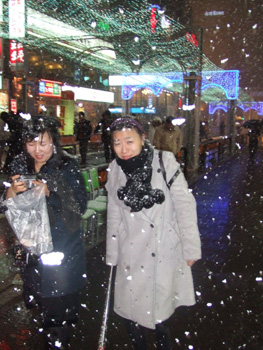
It may be that this is the first snow of the winter, or at least that at does not snow here all that often, because the locals seemed quite excited about it, but did not seem to be particularly well prepared for it.
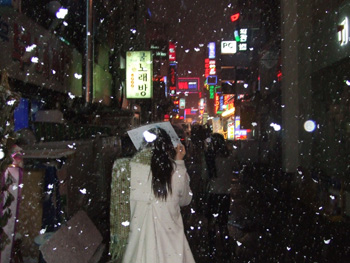
I am here for a few days on my way to Australia for Christmas. So far Seoul seems to be very modern. The new Incheon airport is superb – a wonderful contrast to the horrors of Heathrow yesterday. Like Tokyo, it is a fine city to discover on foot, as there are all kinds of interesting little restaurants, shrines, and all kinds of things down little narrow streets.
More from me over the next few days…
…At least, I hope so. Due to the fact that Korea uses some of the world’s weirdest electricity (220V 60Hz), it did not really occur to me that they would use a standard (continental European) type C plug, so for some idiotic reason I failed to bring a type C adaptor, although I brought most other adaptors known to man. Therefore, until I find an adaptor or a power cable with a different plug on it or something, I have only the small remaining amount of electricity I brought with me from England to power my laptop. In the morning I will go to what my guidebook describes as “the largest electronics market in Asia” where I can hopefully solve this problem. I will also see if it is genuinely larger than electronics markets I have been to in other parts of Asia, and I shall also contemplate the question of where any other bigger electronics markets that are not in Asia might be.
It was a sensational win by a great team
– Shane Warne, discussing the Australian cricket team’s stunning final day comeback to win the second Ashes test and take a 2-0 lead in the series. On the final day, Australia’s two old and tired bowlers, Glenn McGrath and Warne himself, took a total of 42 overs, 18 maidens, 64 runs, 6 wickets, and those numbers are (in case you are wondering what on earth they signify) extremely good .
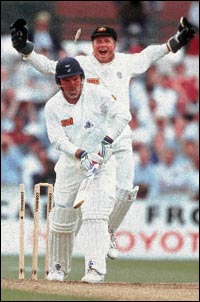
The Ashes are about to start. God it is wonderful.
I am writing this in an airport bar in Prague, where I am having a beer before flying back to London after a weekend away. I will probably write most of the post on the flight home, but it probably will not get posted until I am back in London tomorrow( and this is indeed what has happened. MJ )
This is my second trip to Prague. I was first here in 1992. That trip also involved (amongst other places) Warsaw and Budapest. I had not been back to any of these places again until this year, when I have been back to both Warsaw and Prague. Both Poland and the Czech Republic are much easier places to visit than in 1992 in the sense that I do not need a visa to visit either country, there are lots of ATMs from which I can obtain money, there is less bureaucracy, there are western branded shops on the high street, there are Starbucks clones (although not yet Starbucks itself). In 1992 there were none of these things and travel was harder (I was also in my early 20s and a much less experienced traveller, so my perception may be distorted). However, although Poland and the Czech Republic are now both members of the European Union, the cities both lack the shining new Metro systems, motorways of poorer countries (Spain and Portugal, particularly) that have been dipping in the cohesion fund for longer. Infrastructure works in both places, but it is more spartan.
In 1992, Warsaw felt rather bleak and Prague felt to be a glorious gothic fairytale of a city that had been left behind by the world but which was perhaps catching up. (Budapest was the first city I had been to with a strong Ottoman character about it, and the dominance of the buildings on the high hills overlooking the Danube from the Buda side was and no doubt still is very striking). This year I rather liked Warsaw – it has the feel of a place where business is being done. Prague is still a glorious gothic fairytale of a city, there is lots of good music to listen to, the beer is very good and very inexpensive. The food options are much more diverse than they were 14 years ago. Since the invention of the euro gutted the Dutch money changing industry, the strip between the Charles Bridge and the Old Square in Prague seems to have taken over from that between Centraal Station and Dam Square in Amsterdam as the leading venue in Europe for dodgy money changers and slightly dubious pizza restaurants (the ‘Museum of Medieval Torture Instruments’ seems very old Amsterdam, too).
However, Prague seems to now be perhaps a little too obvious a destination for the more trendy sorts of tourist. People who are seen at the Netherlands Architecture Institute or the Oslo School of Design, and drink in bars with lots of black and chrome and 45 different kinds of vodka (and wear a fair amount of black, but probably only about the right amount to be in keeping with the chrome) tend not to be seen here. It seems more now to be a destination for Anglophone backpackers and American students from universities outside the Ivy League. It is a backpacker destination. It has not moved as far up the tourism food chain that I had hoped it might.
And, alas, I feel I am being a little unkind. I have, in truth had a bad experience today, which has to do with the way in which the tourist ecosystem in Prague has evolved to take advantage of the people who have visited.
Regular readers of this blog will know that I travel a lot. (I will eventually explain what I did in Denmark last weekend. Honest). I generally know what I am doing in a foreign city. I like to believe I am fairly defensive and steet smart, and as I am also a relatively large and scruffy male who at least thinks he does not look prosperous, I have seldom had anyone try to rob me, or otherwise hassle me.
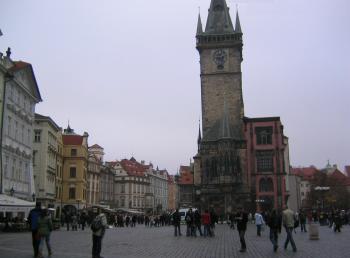 In fact, the only time anyone previously tried to rob me was in Prague in 1992. I started the trip by myself, but by the time I was leaving Prague I found myself in the company of a girl from Brisbane in her early twenties and a slightly mad television journalist from Los Angeles. The three of us went to a railway station in the evening in order to catch the overnight train to Budapest. As we were about to get into the train, a group of loudly talking people crowded around and towards us. My wallet was foolishly in my back trousers pocket, but I was smart enough to respond by immediately putting my hand on it. I discovered that there was another hand on it, trying to pick my pocket. Once the thief realised I was on to him, he rapidly withdrew, but his friends did not. I should have yelled thief at that point, but I am shy and unassertive, so I did not. I few seconds later, I did hear a yell, as the American TV journalist realised that his bag had been unzipped and a hand was in it. He yelled loudly, and the thieves withdrew. Although they tried to rob us, looking back I am struck by what amateurs the pickpockets were in 1992. We were pretty naive too, but still they failed to rob us.
Since then, I have always put my valuables in my front pockets, and I do continue to look a little scruffy, which I have believed meant I was perhaps not an obvious target. Alas, though, this afternoon the thieves figured me out and robbed me anyway. This time they were good at it. → Continue reading: Of Prague and pickpockets
|
Who Are We? The Samizdata people are a bunch of sinister and heavily armed globalist illuminati who seek to infect the entire world with the values of personal liberty and several property. Amongst our many crimes is a sense of humour and the intermittent use of British spelling.
We are also a varied group made up of social individualists, classical liberals, whigs, libertarians, extropians, futurists, ‘Porcupines’, Karl Popper fetishists, recovering neo-conservatives, crazed Ayn Rand worshipers, over-caffeinated Virginia Postrel devotees, witty Frédéric Bastiat wannabes, cypherpunks, minarchists, kritarchists and wild-eyed anarcho-capitalists from Britain, North America, Australia and Europe.
|
